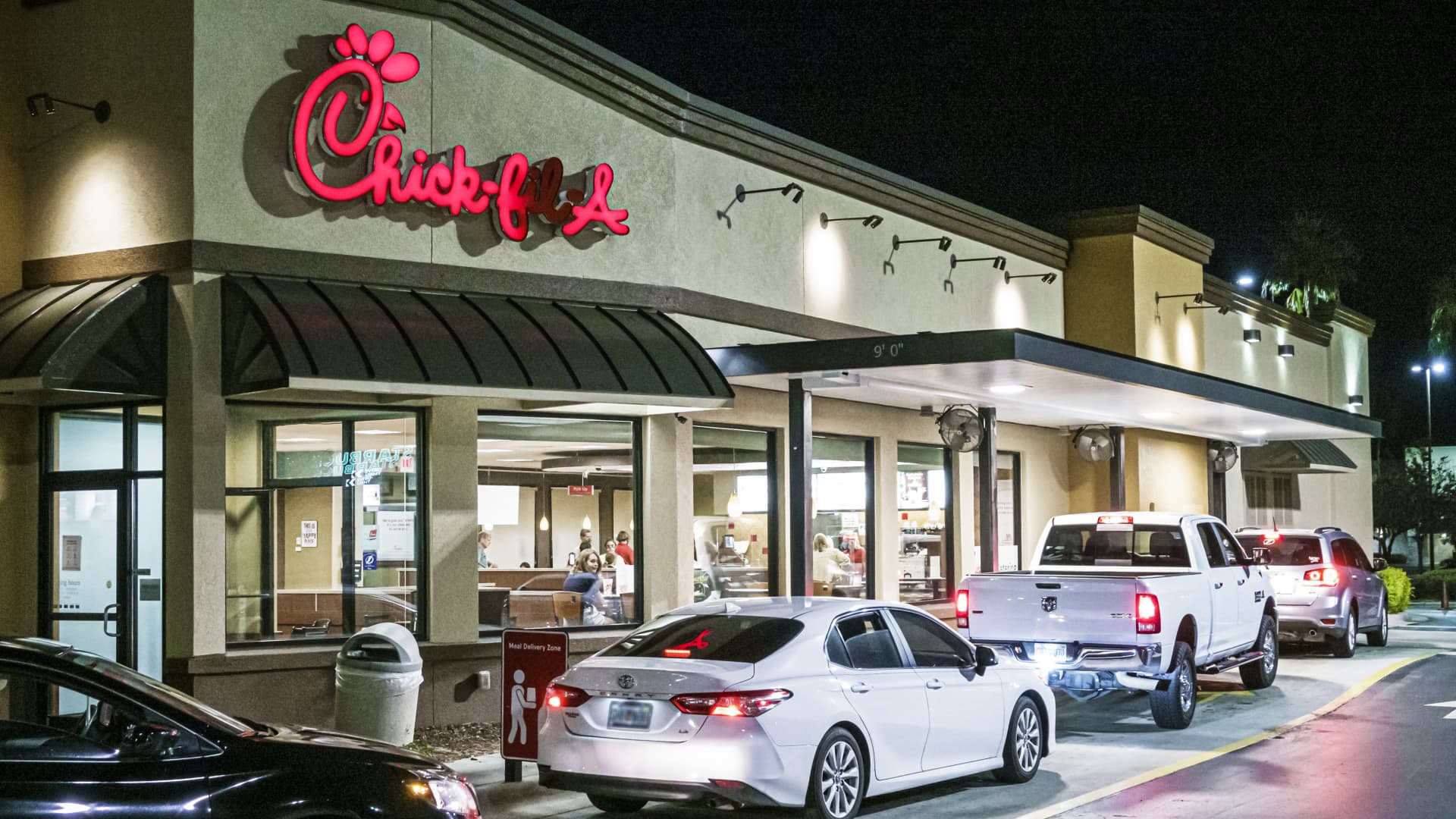Amelia Lucas
So many times I’ve gone to a fast food restaurant with 9+ cars wrapped around the building. I park, go inside and have zero wait to walk up and order my food. I leave finding maybe 2 or 3 cars have advanced through the the line since I walked inside.
I’m totally fine if people want to sit in their cars in line in the drive through. I’m quite happy to not do so and be served faster with a tiny bit of walking.
Amelia Lucas
The average total time spent in a drive-thru lane shrank 29 seconds this year.
Wait times to order were 25 seconds shorter, as the average number of cars in line to place their order fell from 2.76 to 1.27.
Restaurant companies such as McDonald’s and Chick-fil-A are working to speed up service and reduce errors.
Fast-food drive-thru lanes are speeding up as fewer customers choose to order their meals and milkshakes sitting in their car, according to an annual study by Intouch Insight released Monday.
The average total time spent in a drive-thru lane shrank 29 seconds this year. Wait times to order were 25 seconds shorter, as the average number of cars in line to place orders fell from 2.76 to 1.27.
The Intouch Insight study was based on visits to nearly 1,500 locations of Arby’s, Burger King, Carl’s Jr., Chick-fil-A, Dunkin’, Hardee’s, KFC, McDonald’s, Taco Bell and Wendy’s. Mystery shoppers ordered from the drive-thru lanes during a range of times between June and July.
Taco Bell, KFC and Carl’s Jr. had the fastest overall times for their drive-thru lanes. But Chick-fil-A, McDonald’s and Wendy’s bested all three chains when their longer average total times were divided by the number of cars in line. In other words, Carl’s Jr and Yum Brands’
Taco Bell and KFC were only speedier because their drive-thru lanes weren’t as popular.
But across the board, drive-thru lanes have waned in demand since the Covid-19 pandemic began. At that time, customers shifted from ordering inside to ordering from their cars. The trend continued even as fast-food restaurants reopened their dining rooms.
But the surge in popularity put pressure on workers to assemble orders quickly and accurately, and fast-food chains had to come up with solutions such as curbside pickup for mobile orders to address the problem. Despite those efforts, this year’s total drive-thru times still lag 2019 times by 15 seconds.
Many diners have now shifted to ordering online or using self-order kiosks inside restaurants.
Even as drive-thru visits stabilize, restaurant companies such as McDonald’s and Chick-fil-A are still working to speed up service and reduce errors. Some are testing artificial intelligence software to take orders or are building new locations with as many as four drive-thru lanes.
Intouch Insight’s mystery shoppers visited two special restaurants this year: a McDonald’s test restaurant outside of Fort Worth, Texas, with an order-ahead lane and a drive-thru lane, along with a Taco Bell location in Brooklyn Park, Minnesota, with one traditional drive-thru lane and three additional lanes reserved for delivery drivers and customers who ordered ahead.
Both locations’ service times outperformed their broader brands’ times by roughly a minute. The Taco Bell restaurant also outperformed on order accuracy with a score of 88%, versus the chain’s rate of 85%. But the McDonald’s test location fell short with an accuracy score of 80%, well below the chain’s rate of 88%.----


